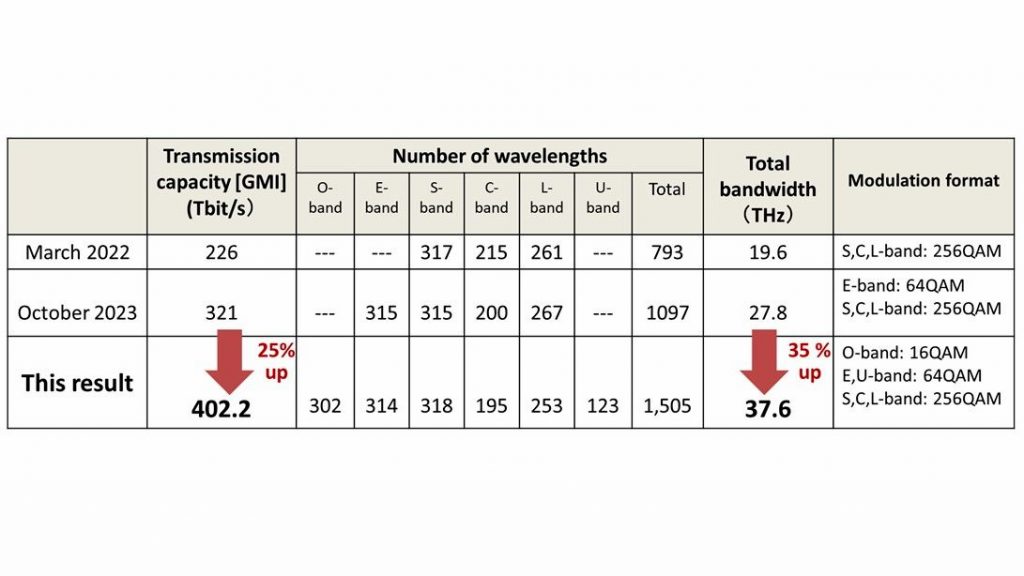Using Terahertz waves, “the world’s first O to U-band transmission system capable of DWDM transmission in a commercially available standard optical fiber achieved with custom designed amplifier technology,”, researchers at the Photonic Network Laboratory of Japan’s National Institute of Information and Communications Technology (NICT) have achieved a broadband speed that puts it right at the top of the world rankings – 402 Tbps at 37.6THz, beating their own 319 Tbps record, set last year. The team achieved the feat by “combining 6 doped-fiber amplifier variants with lumped and distributed Raman-amplification to cover all of the low-loss transmission bands of silica fibers” over a distance of 50 km.

It will take a while for anything remotely like 400,000,000 Megabits per second to become commercially viable, let alone available, but perhaps derivatives developed using the research are now on the horizon.
It was also announced this week that, working with NICT, scientists at Aston University’s Aston Institute of Photonic Technologies in Birmingahm have achieved a speed of 301 Tbps “via specific wavelength bands which are not yet used in fibre optic systems” and using new optical processors, amplifiers and gain equalisers that they themselves had developed.

“Alongside the commercially available C and L-bands, we used two additional spectral bands called E-band and S-band. Such bands traditionally haven’t been required because the C- and L-bands could deliver the required capacity to meet consumer needs
Dr. Ian Phillips, Aston Institute of Photonic Technologies (pictured above)
Source: Tom’s Guide and Aston University


